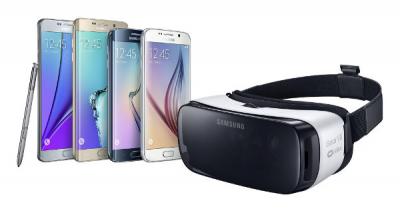According to a report from Korea, Samsung is developing its next-generation Gear VR headset, which will include a built-in display (unlike current models which require you to insert your Galaxy smartphone into the device).

The report claims that Samsung will adopt a new OLED display in this device - which will achieve a pixel density of 2,000 PPI. Such a high pixel density will be great for VR as it will improve the realism and reduce sickness.
Samsung reportedly demonstrated an 1,200 PPI smartphone-sized OLED in March 2017, and both Sunic Systems and OLEDON claim to have developed technologies that will enable OLED deposition up to 2,250 PPI. In May 2017 Google confirmed it is developing a next-generation OLED display for VR applications - with a pixel density of about 1,800 PPI. Google is developing this display in collaboration with a "leading OLED marker" - which could certainly be Samsung.
All this means that it is quite possible that Samsung will have a 2,000 PPI smartphone-sized OLED display in the near future. Of course another possibility is for Samsung to adopt an OLED microdisplay based solution - such as the ones demonstrated by eMagin and Kopin.


Usually we think that FMM is the limit of achieving high resolution in small and medium sized AMOLED panels. I don't think it's right. The real limit is the whole system of current small and medium sized AMOLED manufacture. So if you wanna do some super high resolution AMOLED panels just like VR's screen, you should better think about semiconductor process. Evaporation machine and FMM is only for mobile panels which don't need the resolution over 1500 PPI. Unless they can make the temperature of vacuum chamber invariable(Invar). In this field, flexible and transparent function is the future.